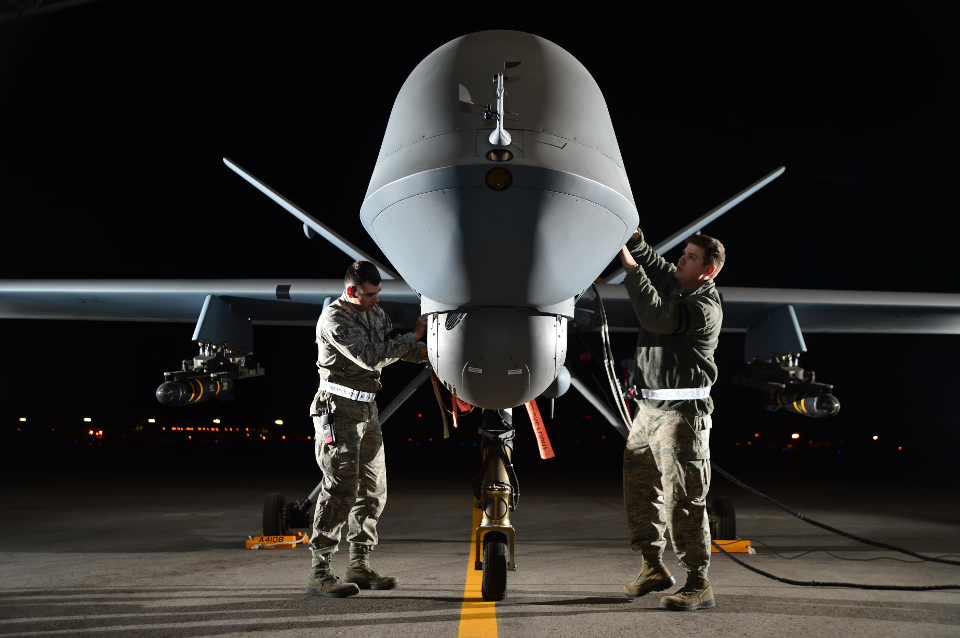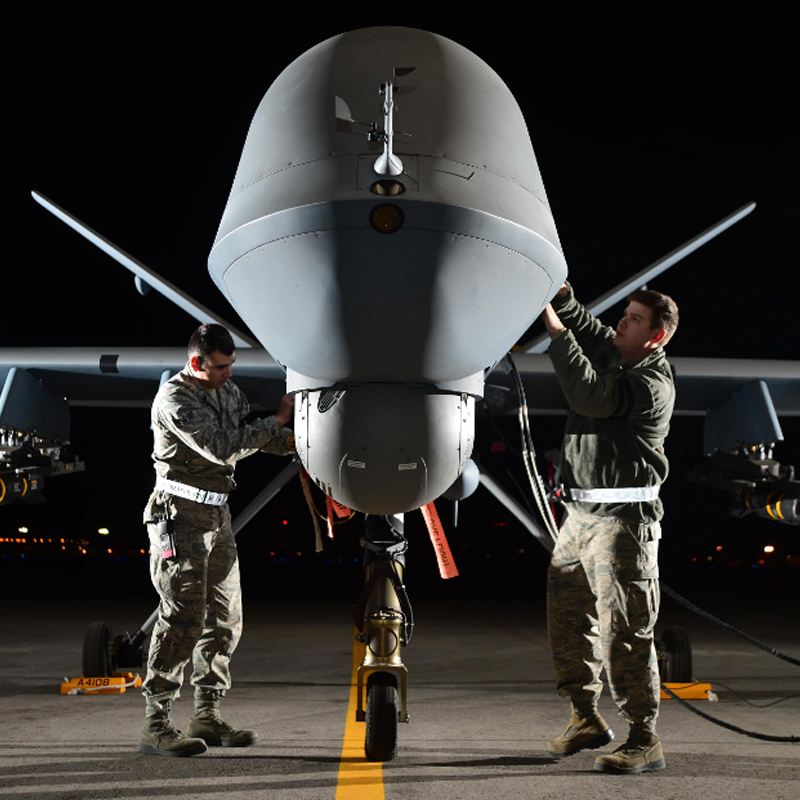
NASC in the News
NASC in the News
News: Why The Air Force Needs A Cheaper Reaper
Last week the Air Force released a request for information for a next-generation drone to replace the MQ-9 Reaper. The new unmanned aircraft, which should enter service in 2031, will have built-in AI to fly itself and learn from experience. However, the Air Force also wants a leap forward in another, more crucial area: cost. Because what they really need is a cheaper Reaper.

The Reaper is the mainstay of the Air Force’s drone force. Launched from air bases close in the theater of operations, it can cruise for 27 hours, flown remotely from Nevada by relays of pilots. The Reaper carries a suite of sophisticated sensors for a close-up view from 10,000 feet, and a mix of Hellfire missiles and laser- and GPS-guided bomb to attack targets. Iranian Quds Force General Soleimani was killed by a Reaper strike in January, showing they are employed against the very highest-value targets.
The problem is the price. In 2008 they were $14 million apiece, but the Air Force’s latest budget figures shows each new Reaper costs $32 million. That makes them even more expensive than the pricey, top-end AH-64E Apache attack helicopter. It is a lot for what is, at heart, supposed to be an expendable drone.
The Reaper or Predator-B, is an upgrade of the original MQ-1B Predator which was retired in 2018 by the USAF. This original Predator was designed in the 90’s as a low-cost sensor platforms, with a simple airframe and repurposed engine – the Rotax powering the Predator was also used for snowmobiles – and cost around $4m each. This rose to about $7m by 1997. At least five were lost in Balkans campaign in the ‘90s, either to mechanical failure or Serbian missiles, but this was considered good value for the intelligence they gathered.
When pilot Scott O’Grady was shot down over Bosnia in 1995, a huge rescue mission was mounted with full media coverage. When an unmanned Predator was lost, the Air Force simply bombed the wreckage to prevent the enemy gaining intelligence, and wheeled out the next replacement. It barely merited a paragraph in the newspapers. Their expendability, going places too risky for manned aircraft, made drones useful.
Things changed when the Predator was replaced by Predator B. The Reaper is twice as fast as the original and carries five times the payload, making it more like a traditional Air Force plane…though it has less endurance than the Predator’s 40 hours which was arguably the rationale for a drone loitering above enemy territory.
The price inflation from $4m to $7m to 14m to the current $32m is no great surprise. Increased performance always has a disproportionate effect on cost, and continual upgrades mean continual price hikes. Military aircraft are notorious for following Augustine’s Laws. These are a set of semi-satirical observations formulated by a defense industry procurement executive in the 1980s that predict that by 2054 the Air Force and Navy will only be able to afford a single aircraft between them.
But that $32m price tag means that the Reaper could not be bought in large numbers. It also means the Reaper is not as expendable as the Predator, and losses cannot not be ignored.
For years Reapers operated with relative impunity over Iraq, Afghanistan and elsewhere, but two were shot down over Yemen by Houthi rebels last year. Reapers operate at medium altitude; other planes stay safe by flying at extreme altitude like the U-2 Dragon Lady, or by keeping down in the weeds. At medium altitude an aircraft is liable to be seen and shot at, and while Reaper operations generally avoid ‘defended airspace,’ as events in Yemen show, some losses are to be expected.
General Atomics, maker of the Predator and Reaper, rolled out the Predator-C or Avenger, a sleek, stealthy version of the drone designed to cope with air defenses. However, the Avenger had reduced endurance and payload and likely increased cost, and the Air Force were clearly not convinced, turning down the Avenger in 2011. In 2012 the Air Force effectively cancelled its plans for an MQ-9 Reaper replacement, known as MQ-X, in favor of Reaper upgrades. However, this February, the Air Force announced it was ending production of the Reaper.
The Air Force’s new request for information aims to find out about potential replacements, to carry out the “Hunter-Killer ISR [Intelligence, Surveillance, Reconnaissance] Mission” at medium altitude. This specifies a need for a ‘reduced lifecycle cost’ and mentions the need for ‘Attritable Technology’ – in other words, drones they can afford to lose.
Even before the new request, the Air Force was looking at low-cost commercial drones to fill the gap. Not everyone has the military’s millions for drone acquisition, and there are a variety of MALE (Medium Altitude, long Endurance) drones that might be adapted to their needs.
“We also see a lot of opportunity to bring in commercial technology, push the price point down, have systems that … we can take more loss with.” Dr. Will Roper, assistant secretary of the Air Force for acquisition, technology and logistics, told lawmakers in March.
They will be looking in particular at modern drones like TEROS made by NavMar. This is in the same weight class as the original Predator, with an endurance of 23 hours, and carries a 600-pound payload. It is designed for rapid servicing and autonomous flight operations with minimal ground crew. It exploits the use of a proven airframe and off-the-shelf commercial components rather than the custom-made electronics of military drones. TEROS successfully completed flight testing in February, and it builds on NavMar’s long experience with the smaller TigerShark drone supplied to the U.S. Navy (supplied at less than $1m each).

Drones like TEROS carry less than the Reaper’s 3,800-pound payload, but it is doubtful whether the mission still needs that sort of weight. The Lynx radar developed for the Predator was an amazing feat of miniaturization in the late ‘90s, cramming a high-resolution ground surveillance radar into just 120 pounds. More recent developments have seen this type of synthetic aperture radar shrunk to two pounds. Similarly, the hefty, 100-pound AGM-114 Hellfire missile is overkill, causing too much collateral damage for many missions, hence the development of a bizarre non-explosive Ninja Hellfire with pop-out ‘sword blades’ for some targets. Something like the five-pound SwitchBlade precision munition, well proven in Afghanistan and elsewhere against vehicles and individuals, might be an effective lightweight alternative.
The Predator, originally little more than a powered glider with a camera, morphed into something closer to a standard Air Force plane in terms of performance and cost – making it hopeless for the mission it was supposed to perform. Perhaps, given a clean sheet, the Air Force will succeed in procuring a smarter, high-tech, low-cost, long-endurance drone it can buy in large numbers and afford to lose, a cheaper Reaper to get the job done.


